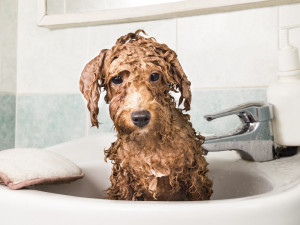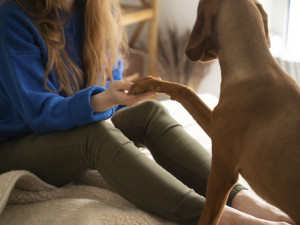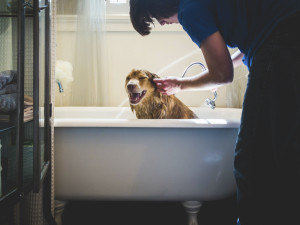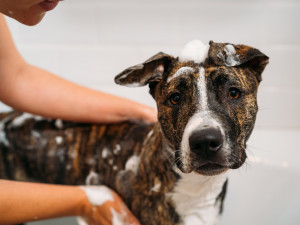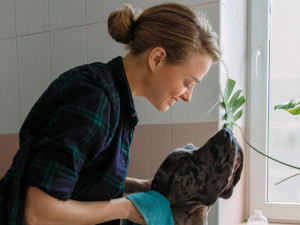Skipping the Groomers? Try These DIY Dog Wash Tips
Save money and groom your pup yourself with these tips from a pro.
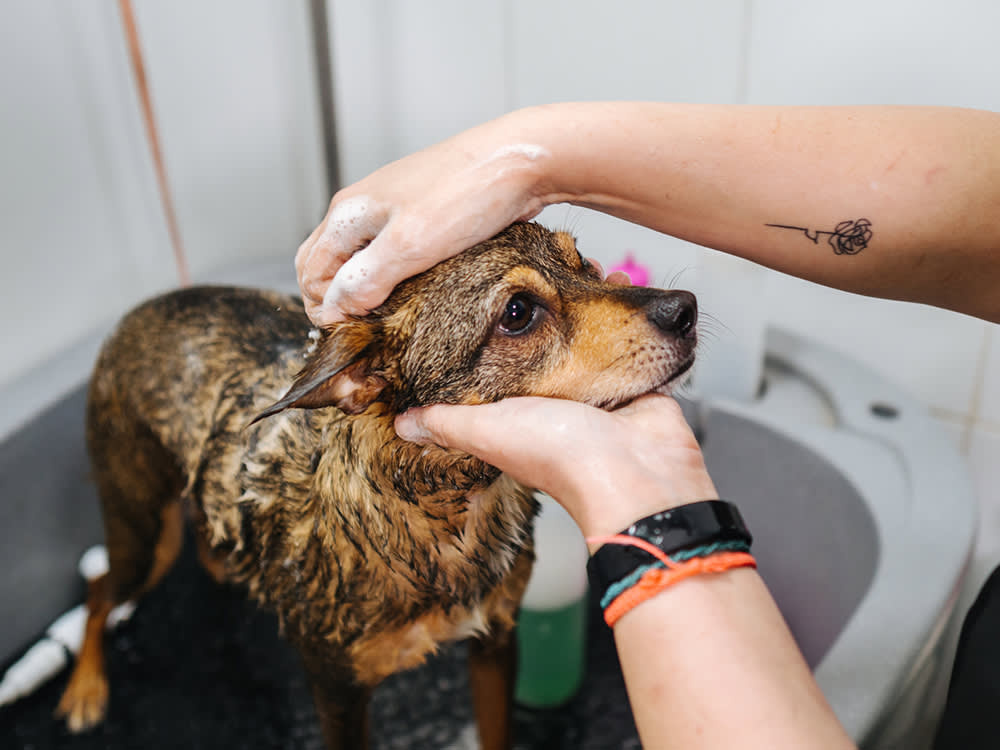
share article

Your pet wants you to read our newsletter. (Then give them a treat.)
If you want to save money on dog grooming, learn to do it yourself. Since the groomer’s biggest task is bathing the dog, that’s a good place to start. In many areas of the country, pet stores now offer self-service dog-wash facilities. The store usually provides shampoo and towels, but to get the most out of the experience—and the most for your money—you need to have a plan.
Before bringing your dog to the dog wash station:
Scope out the facility and talk to the manager.
Appointments are sometimes taken, but most pet baths are “first come, first served”; weekends are always the busiest, weekday mornings are the slowest. Look for non-slip surfaces (including ramps or steps to the tub), tie-downs and general cleanliness to determine if the place might be a good fit. Determine what’s provided – do they offer free shampoo, towels, or aprons?
Check out the costs and compare to others in the area.
Verify how much time you get for your money; some self-service grooming stations allow all the time you need for a set price, while others charge by the minute. Be realistic about how long it will take. Your Chihuahua could be spic and span within five minutes. Your double-coated Rough Collie or Poodle mix might take an hour.
Find out if there’s a groomer on site.
If you can’t do it yourself, you’ll want the groomer to cut your dog’s nailsopens in a new tab and possibly do a sanitary trim (very important for fluffy, low-shedding dogs).
Tips for washing your pup at a self-serve dog wash.
1. Give your dog a thorough pre-bath brush.
Before heading to the dog wash, make sure your pup is totally brushed out and mat-free. Washing matted fur is counterproductive. Among other things, it’s almost impossible to dry it completely, which sets the stage for skin infections caused by bacteria and mold.
Brush from your dog’s rear legs up, against the grain (the direction the hair grows) toward the body to the head. If you have a Pit Bull, this won’t take any time at all. If you have that Rough Collie (or Chow, Alaskan Malamute, Golden Retriever or Afghan) it will obviously take you longer, but you’ll save on tub time because it will be easier for the water to penetrate the coat. In any case, it makes sense to either brush out or cut off hair you don’t want to end up washing.
2. Check your supplies.
If the dog wash doesn’t have your preferred shampooopens in a new tab, take your own. Ditto for towels. And, because the aprons stores provide aren’t always up to the job of keeping you entirely dry, bring a rain poncho.
3. Before bathing, use the blower to remove excess fur.
At the site, use the force blower before getting your dog wet. Blow out the loose hair you may have missed when brushing. Force blowers aren’t dryers; they work by velocity and are really effective.
4. Start washing your pup.
Wet your dog from the bottom and rear up, then apply shampoo. Rather than lather it on with your hands, brush the shampoo through your dog’s coat. For slick types, such as Pit Bulls or Labs, a rubber curry will do. For a double-coated or low-shedding dog, a slicker brush is ideal. And remember, more shampoo doesn’t get your dog cleaner. It’s the ingredients and the agitation of the shampoo against the fur that do the job.
5. Rethink crème rinse or conditioner.
If your dog’s coat is prone to tangles or you want to cut static, they can help, but they work by retaining moisture, which will make your dog more difficult to dry. A better solution is an after-bath antistatic, like The Stuff or Ice on Ice.
6. Thoroughly rinse and stand back.
Thoroughly rinse your dog and squeeze out as much extra water as you can (then stand back when he shakes off). After towel drying, use the blower/dryer to finish up.
A word of caution: if you have a drape-coated dog, like an Afghan or Lhasa Apso, the velocity of the air will cause the hair to tangle. Go very slowly and hold the dryer at a distance. (This is why groomers sometimes partially crate-dry these types of dogs and have a low-velocity dryer on a stand. It’s pretty labor intensive to blow dry a long-haired dog.)
It takes a bit of practice to get it right and become efficient, but it’s time well spent. You’ll save some money, your dog will smell swell and your bathtub will still be clean: a real win-win, as they say in business school.
Robyn Michaels
Robyn Michaels is a writer and professional dog groomer.
Related articles
![A woman trimming a dog's nails]() opens in a new tab
opens in a new tabHow to Trim Your Dog’s Nails
Five simple steps for trimming your dog’s nails at home.
![A man giving a dog a bath in a bathtub.]() opens in a new tab
opens in a new tab7 Tips for a Dog Washing Station
Make bath day easier with a DIY dog washing station.
![A dog getting a bath]() opens in a new tab
opens in a new tabHow Often Should You Wash Your Dog?
“If your dog is stinky or looks dirty, wash ’em!” Plus more pro tips from LA dog groomer Jess Rona.
![Smiling woman wiping ears of dog]() opens in a new tab
opens in a new tabShould You Clean Your Dog’s Ears at Home?
Heed all those cautionary tales about Q-tips.
